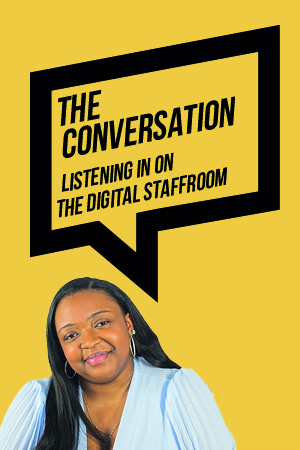Publisher
Channel 4
Published
2 Jul 2020
Marie Gentles reviews episode 2 of the series that’s tackling unconscious bias in year 7 pupils
As a black teacher and mother of two, my initial response to the programme’s title was “wow”. I was deeply sceptical about its impact on an important message at a crucial moment.
But I was pleasantly surprised, and felt proud of the year 7 pupils at Glenthorne High School in south London in communicating the complexity of the topic. Their dedication to this three-week project showed a responsibility some adults would not be capable of. Their growth – academic and personal – really came across.
The ethics of running a segregation experiment with impressionable young people has been questioned, but the creation of a safe environment allowed them to clearly express their thoughts and feelings. The familiar “it’s not fair” highlighted their youthful innocence, but their ability to process the emotions the programme stirred up was impressively mature.
I’ve always been passionate about getting the balance right between letting children be children and not underestimating their capabilities. The activities and the adults leading them here did just that, so that they (and we as viewers) were able to go deep, fast.
I don’t think anyone watching could be left feeling anything but proud
I suspect black viewers will welcome American educator Mariama Richards’ explanation of the cycle of systemic racism that starts with fear of difference and results in subconscious, internalised oppression. I know it exists, but that knowledge and the language to speak it are vital to breaking something so deeply embedded it becomes part of who we are, defines what we think we can and can’t do, and shames us into feeling “unworthy” when we do achieve. The way this was clearly and visually explained was as powerful as it was simple, never overwhelming the viewer.
A National Portrait Gallery sequence, in which the students learned that slave compensation went to slave owners, captured the raw initial reactions of the white students and how those feelings were transmuted to empathy with their non-white peers. The way it brought the group closer truly brought out the importance of whole-child education in the fight against racism.
How bias influences learning was touched on. I learned from the white students that their voice too can sometimes be lost as they try not to do or say the wrong thing. Creating the mental space to process systemic racism and enable a more sophisticated understanding meant the programme was respectful of and empowering for viewers of all ages and races.
For all the concern then, the programme will no doubt have impacted positively on the lives of those who took part. I don’t think anyone watching could be left feeling anything but proud of them in their focus on solutions. It also showed the importance of character education in child development – something that is too often desperately squeezed into the curriculum.
The programme took us through wave after wave of emotions, gently yet overtly challenging us. Good. We all bear responsibility, because racism is part of all our lives. We mustn’t be afraid to dig deeper into it and to embed knowledge of it in our schools’ curricula.
I desperately want my children and my children’s children to know their contribution to society is as valid and valuable as that of their white friends and peers. The School that Tried to End Racism did leave me wondering: for inclusion, acceptance and equal opportunities to become a reality, do we need to look again at teacher training? And wouldn’t it be better to start such an education in primary schools?
One participant, Beth, made me hopeful of change. She described herself as intimidated and nervous at first, and open and ready to share at the end. If education about unconscious bias can do that in three weeks, imagine what we can achieve together in a lifetime.













One significant moment was when the children from an Asian background decided a third affinity group was needed. They felt splitting children into tow groups, BAME and White, was too crude.
This rang true for me who, when working in a 99% white school, met a Muslim lad who’d been stabbed in London by a Somalian boy. BAME v White would lumped this lad with those from the same background as his attacker. As it was, his family thought he would be safer living with relations in a predominantly white county than staying in London.
Doese anyone know the name of the training that these teachers had? I’d like to request it. Thank you.